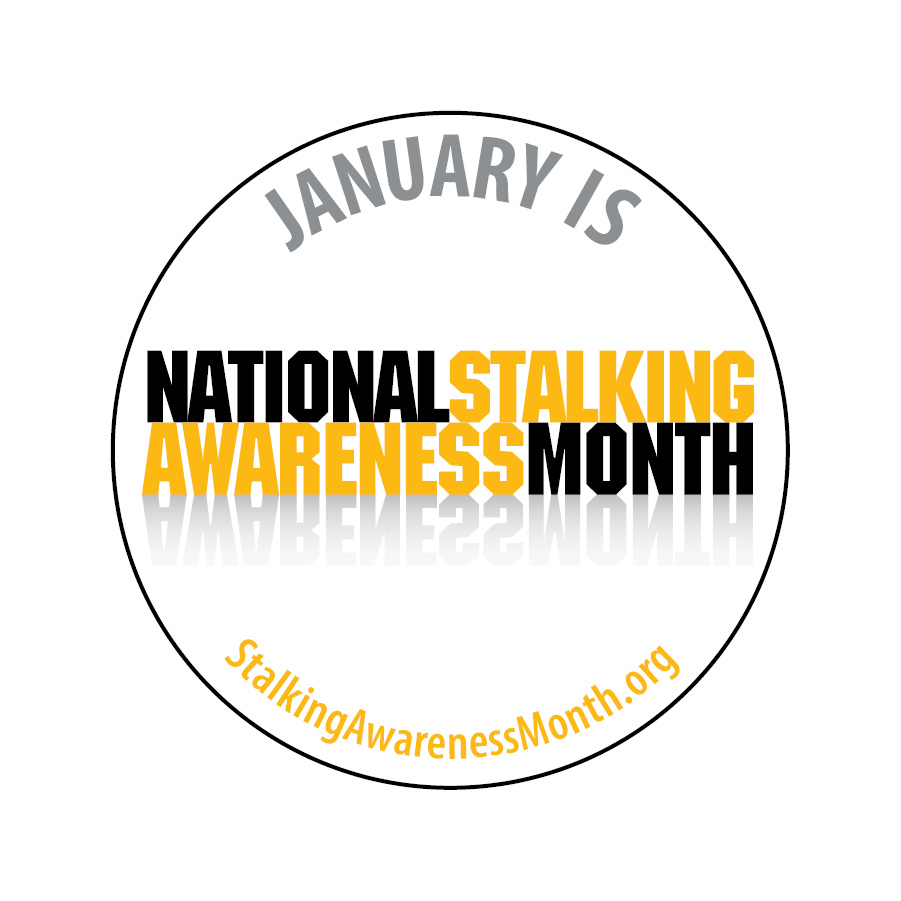What is stalking?
While legal definitions of stalking vary from one jurisdiction to another, a good working definition of stalking is a course of conduct directed at a specific person that would cause a reasonable person to feel fear.
Stalking is serious, often violent, and can escalate over time.
Some things stalkers do:
-
Follow you and show up wherever you are.
-
Send unwanted gifts, letters, cards, or e-mails.
-
Damage your home, car, or other property.
-
Monitor your phone calls or computer use.
-
Use technology, like hidden cameras or global positioning systems (GPS), to track where you go.
-
Drive by or hang out at your home, school, or work.
-
Threaten to hurt you, your family, friends, or pets.
-
Find out about you by using public records or online search services, hiring investigators, going through your garbage, or contacting friends, family, neighbors, or co-workers.
-
Posting information or spreading rumors about you on the Internet, in a public place, or by word of mouth.
-
Other actions that control, track, or frighten you.
You are not to blame for a stalker’s behavior.
Stalking Victimization
- 7.5 million people are stalked in one year in the United States.
- Over 85% of stalking victims are stalked by someone they know.
- 61% of female victims and 44% of male victims of stalking are stalked by a current or former intimate partner.
- 25% of female victims and 32% of male victims of stalking are stalked by an acquaintance.
- About 1 in 5 of stalking victims are stalked by a stranger.
- Persons aged 18-24 years experience the highest rate of stalking.
- 11% of stalking victims have been stalked for 5 years or more.
- 46% of stalking victims experience at least one unwanted contact per week.
[Matthew J. Breiding et al., “Prevalence and Characteristics of Sexual Violence, Stalking, and Intimate Partner Violence Victimization – National Intimate Partner and Sexual Violence Survey, United States, 2011”, Centers for Disease Control and Prevention Morbidity and Mortality Weekly Report, Vol. 63, No. 8 (2014): 7]
[Katrina Baum et al., (2009). “Stalking Victimization in the United States,” (Washington, DC:BJS, 2009).]
If you are being stalked, you may:
- Feel fear of what the stalker will do.
- Feel vulnerable, unsafe, and not know who to trust.
- Feel anxious, irritable, impatient, or on edge.
- Feel depressed, hopeless, overwhelmed, tearful, or angry.
- Feel stressed, including having trouble concentrating, sleeping, or remembering things.
- Have eating problems, such as appetite loss, forgetting to eat, or overeating.
- Have flashbacks, disturbing thoughts, feelings, or memories.
- Feel confused, frustrated, or isolated because other people don’t understand why you are afraid.
These are common reactions to being stalked.
Impact of Stalking on Victims
- 46% of stalking victims fear not knowing what will happen next. [Baum et al., (2009). “Stalking Victimization in the United States.” BJS.]
- 29% of stalking victims fear the stalking will never stop. [Baum et al.]
- 1 in 8 employed stalking victims lose time from work as a result of their victimization and more than half lose 5 days of work or more. [Baum et al.]
- 1 in 7 stalking victims move as a result of their victimization. [Baum et al.]
- The prevalence of anxiety, insomnia, social dysfunction, and severe depression is much higher among stalking victims than the general population, especially if the stalking involves being followed or having one’s property destroyed. [Eric Blauuw et al. “The Toll of Stalking,” Journal of Interpersonal Violence 17, no. 1(2002):50-63.]
Stalking and Intimate Partner Femicide*
-
76% of intimate partner femicide victims have been stalked by their intimate partner.
-
67% had been physically abused by their intimate partner.
-
89% of femicide victims who had been physically assaulted had also been stalked in the 12 months before their murder.
-
79% of abused femicide victims reported being stalked during the same period that they were abused.
-
54% of femicide victims reported stalking to police before they were killed by their stalkers.
*The murder of a woman.
[Judith McFarlane et al., “Stalking and Intimate Partner Femicide,” Homicide Studies 3, no. 4 (1999).]
Stalkers
A stalker can be someone you know well or not at all. Most have dated or been involved with the people they stalk. Most stalking cases involve men stalking women, but men do stalk men, women do stalk women, and women do stalk men.
- 2/3 of stalkers pursue their victims at least once per week, many daily, using more than one method.
- 78% of stalkers use more than one means of approach.
- Weapons are used to harm or threaten victims in 1 out of 5 cases.
- Almost 1/3 of stalkers have stalked before.
- Intimate partner stalkers frequently approach their targets, and their behaviors escalate quickly.
[Kris Mohandie et al., “The RECON Typology of Stalking: Reliability and Validity Based upon a Large Sample of North American Stalkers,” Journal of Forensic Sciences 51, no. 1 (2006).]
Stalking Laws
-
Stalking is a crime under the laws of all 50 states, the District of Columbia, the U.S. Territories, and the Federal government. Click here for a compilation of state, territory, tribal, and federal laws.
-
Less than 1/3 of states classify stalking as a felony upon first offense.
-
More than 1/2 of states classify stalking as a felony upon second offense or subsequent offense or when the crime involves aggravating factors.
-
Aggravating factors may include: possession of a deadly weapon, violation of a court order or condition of probation/parole, victim under 16 years, or same victim as prior occasions.
For more information on Stalking: Victims of Crime.org

